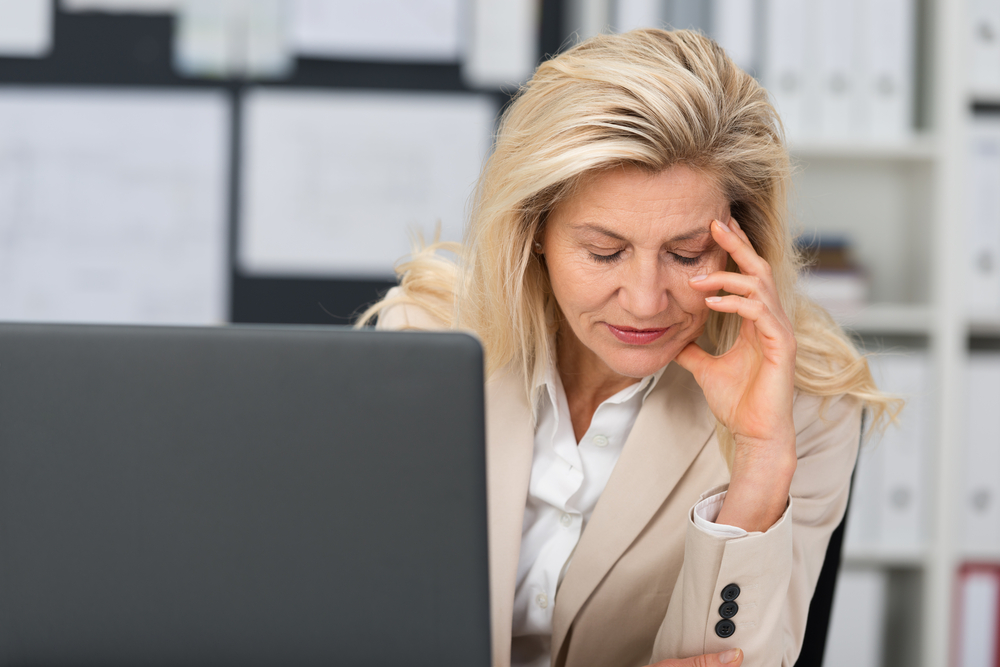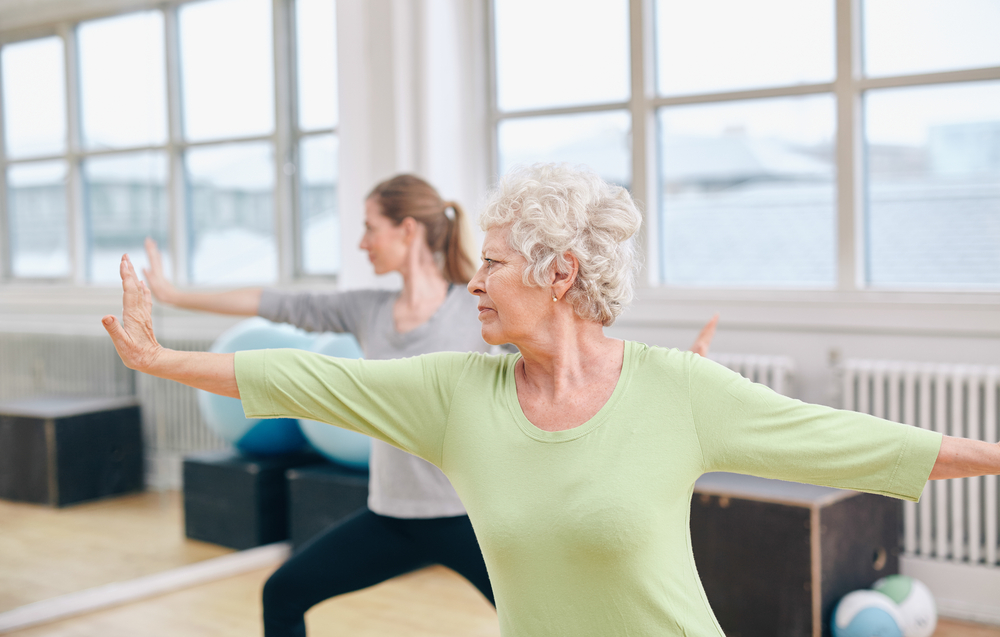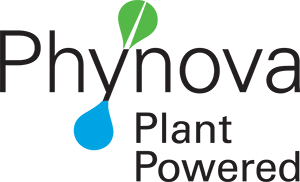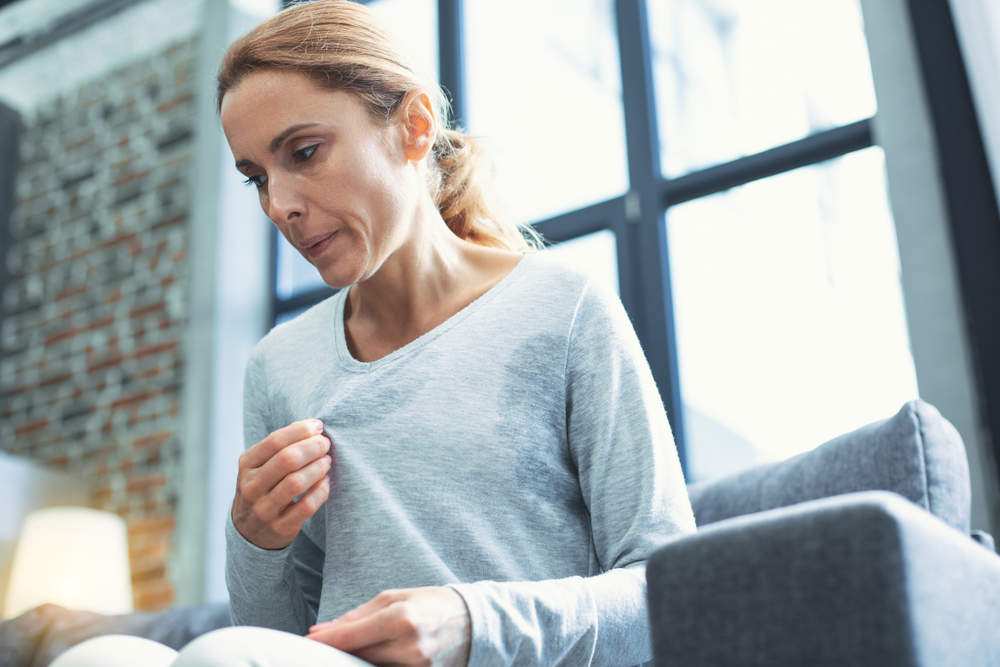Joint pain is not one of the first symptoms to come to mind when we think about the menopause.
Hot flushes, night sweats, and mood swings we all know about. But stiff and achy joints? No.
‘We’re far more likely to put these down to something else,’ says Kathy Abernethy, who’s Chair of The British Menopause Society and author of Menopause: The One Stop Guide (published by Profile Books).
‘I meet a lot of patients who have been suffering with joint pain in silence,’ Kathy says. ‘It’s actually a very common symptom of menopause – but one that women are largely ignorant about.’

Joint pain and menopause – Spot the signs
The type of pain we’re talking about is typically experienced first thing in the morning, and tends to improve as the day progresses, says Kathy.
‘The most common joints affected are in the fingers, wrists and shoulders. A lot of women put it down to having had a bad night’s sleep, or just the fact that they’re getting older.’
But although these early morning joint pains may make women feel as if they’re ageing, the fact is that they often start under the age of 50.
‘Joint pain is one of the symptoms that occur in the perimenopausal stage – the lead up to the menopause itself,’ explains Kathy. ‘This is the time in a woman’s life when her oestrogen levels are starting to fall, and it’s the up and down, very volatile nature of hormonal flux at this time that seems to impact on joints (which have previously been protected by stable levels of the hormone).’
Despite our apparent ignorance about menopausal joint pain, a 2011 study in The Journal of Women’s Health found that joint pain and stiffness affects 40% of women around menopause and that it is also the symptom most likely to affect these women’s health related quality of life, and the main reason women may need to take time off from work at this stage of life.
Menopause in a nutshell
The menopause is the name given to the last period a woman ever has – signaling that her egg reserve has been depleted – but it is only with hindsight that she can be sure that this has happened, and a diagnosis of menopause is usually made after twelve months without a period.
‘Symptoms that occur in the perimenopause are often harder to recognise, especially if a woman’s periods are still fairly regular and she is not aware of the hormonal changes going on,’ says Kathy.
How to find out if your joint pains are menopause-linked
Investigations such as blood tests and X-rays might be ordered to rule out other medical causes if there are no obvious menopausal symptoms. ‘The diagnosis of menopausal joint pain is made by process of elimination,’ Kathy explains.
‘But the truth is that most women do not go to their doctor about these aches and pains – in fact only 50% of women go to the doctor about any of their menopausal symptoms.
‘It is usually only when we, as menopause specialists taking their medical history, ask specifically about joint pain that our patients realise they are related. The good news is that joint pains linked to the menopause may eventually go away – they are not a sign of irreversible decline into old age.’
Do menopausal joint pains need to be treated?
Some women only realise their joint pains were menopause-related when they take HRT for other symptoms, and find that their joint pains are also eased by the treatment – although HRT doesn’t always alleviate joint pain, says Kathy.
‘We don’t know the exact cause of menopausal joint pain, but the theory is that low oestrogen levels lead to a decrease in joint protective collagen. It is possible that oestrogen acts in an anti-inflammatory way in the joints,’ says Kathy.
Even without taking HRT to replenish stores of oestrogen (and progesterone), a lot of women see their joint pains improve spontaneously within five years of onset. ‘The effect of menopause on the joints, along with other symptoms, is not usually permanent,’ says Kathy. ‘How long these symptoms last varies enormously, but for 30% of women, joint pains – along with a raft of other menopausal symptoms – can remain a problem up to 10 years after their menopause.’

Tips for menopausal aches and stiffness
– Don’t stop exercising – keep supple, but don’t over-exercise or put stress on uncomfortable joints.
– Keep an eye on your weight – carrying extra kilos may put a strain on joints. Stick to a balanced diet.
– Try to get adequate rest and sleep.
You could also try Phynova Joint and Muscle Pain Relief Tablets, a traditional herbal medicinal produced used for the relief of: backache, minor sports injuries, rheumatic or muscular pains, and general aches and pains in the muscles and joints based on traditional use only. Click here to find out more.

